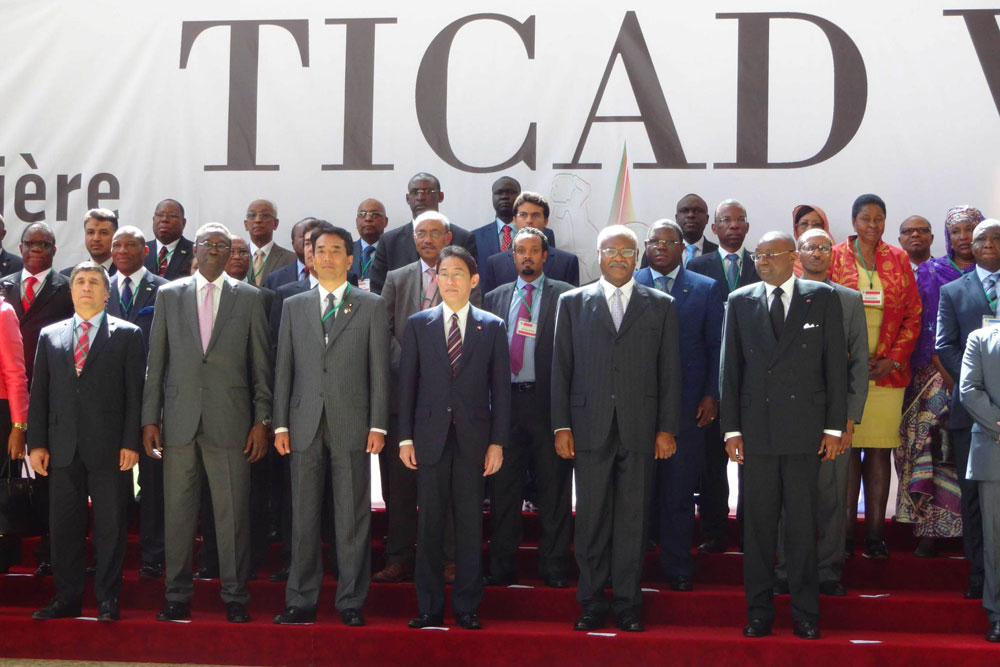In this exclusive interview with African Leadership Magazine, Mr Victor Mulenha Mundende, Managing Director of Zesco Limited, the largest electricity provider in Zambia, speaks on the rise of his organization and the challenges faced in the Zambian electricity industry. Excerpts:
- Zesco Limited has transformed itself from a small thermal station in 1906 to a renowned power company known for efficient service delivery; can you tell us more on how you got this far?
It is important to note that the transformation from a small Thermal station of 1906 to what Zesco is today has gone through many phases of Investment and expansion in terms of machinery, and equipment in Generation, Transmission, Distribution and customer services.
Over the years, ZESCO has invested heavily in its delivery capacity to ensure that we have an energy footprint fit to support the economic activities of the country and also to meet the growing power demand by our customers within the country and regions beyond.
With the support of the government, an ambitious program to develop generation power was put in motion. Today we can talk about flagship power stations such as:
- Kafue Gorge power station – 990 MW
- Kariba North Bank Power station – 720 MW
- Kariba North Bank Extension (KNBE)- 360 MW
- Victoria Falls Power station – 108 MW
- Itezhi-tezhi Power station – 120 MW
These power stations have provided the backbone of power generation in Zambia and anchored the Growth and Expansion of economic activities in Mining, agriculture, Manufacturing, and Tourism as well as support of household-related activities that support the population.
In addition to the main hydropower stations, Zesco Limited embarked on a program for a Distributed generation by tapping into the generation potential in high rainfall areas in order to spread the Hydrological risk load and offload the demand on the main Grid network.
In this regard the following small hydro-power stations have since come on board:
- ILusiwasi Power station – 12 MW, now being upgraded to 15 MW.
- Chishimba Power Station – 6 MW, now under rehabilitation.
- Lunzua Power station – upgraded from 0.750 MW to 14.8 MW.
- Musonda falls power station – upgraded from 5 MW to 10 MW.
- Shiwangándu Power Station – 1 MW.
- The ‘vision’ of ZESCO Limited is to become the hub for electricity trading in the Southern African hemisphere by 2025. How do you intend to make this vision a reality?
Indeed, the vision for Zesco Limited is to become the hub of electricity trading in the sub-region by 2025.
For us to realise this vision, we have embarked on a number of expansion programs:
Increased Generation capacity
You will note that besides the flagship power stations alluded to earlier, ZESCO Limited has gone into opening up of additional power stations to strategically position ourselves in the electricity energy subsector for the region. Many of these power stations are either complete, under construction or currently under feasibility studies:
- Kafue Gorge Lower – 750 MW, is under construction and USD 2.0 Billion will be spent.
- Batoka Gorge power station – 2000MW.
- Lusiwasi Lower Power station – 86 MW.
- Hydro Power station on Luapula River – 700MW.
Construction of interconnectors
ZESCO is fostering the integration of African utilities by building interconnecting lines that will encourage the sharing of electrical power resources. This will culminate in increased electricity connection levels in Zambia, and reduced negative impacts caused by climatic factors and other catastrophes for the entire region. This will also increase ZESCO’s market share matched by increased revenues that will allow the power utility to further accelerate the pace of the electricity infrastructure development.
The power utility has also embarked on an ambitious upgrade of transmission lines and construction of greenfield Transmission lines to reinforce internal corridors leading to the integration with other regional utilities. This in part will lead to the integration of the Southern African Power POOL (SAPP) to the Eastern African Power Pool (EAPP). ZESCO is currently constructing a line that is part of the Zambia-Tanzania-Kenya (ZTK) Interconnector project. Then there is another line that will interconnect the Kolwezi in the DRC Congo (Katanga Province) to Solwezi in North-Western Zambia. Another line will connect the countries of Zimbabwe, Zambia, Botswana, & Namibia (a.k.a. the ZIZABONA interconnector). Finally, two more transmission lines from Zambia into Malawi and Mozambique (respectively), are at advanced feasibility and expected to complete the picture.
Expanded transmission network.
Another critical area in power trading is the evacuation of electricity from generating plants to the load centres or to our customers. In this regard, Zesco Limited has embarked on another ambitious program of Network visibility.
When you move around the country today you will probably notice that Zesco Limited has constructed transmission lines in all corners of the country. Examples include:
- Kafue – Muzuma – Livingstone – Katima mulilo 330 / 220 KV Line has been done.
- Pensulo – Kasama 330 KV Line has been done.
- Pensulo – Chipata 330KV line has been done.
- Itezhi Tezhi to North Western Grid Extension has been done.
- Lusaka – Luangwa – Chipata 330 kV Line. Under construction.
- And many others.
In this Program, we are essentially utilizing the geographical potential of Zambia as a land-linked country by expanding our transmission lines on the doorsteps of the sub-region.
Skills Transfer
- You will be interested to note that Zesco Limited prides itself as a company managed by a workforce that is purely Zambian. We have invested heavily in the development of our human capital and created a cadre of well trained and experienced Engineers and other support staff.
- Our vision to be the hub of electricity trading is supported by human resource capital at our disposal.
- ZESCO engineers supervise and manage all projects in Power Generation, Transmission, Distribution and Customer services.
- We also provide skills transfer to Private companies in Zambia and the sub-region.
Investment in the expanded use of technology
- In the use of Technology, Zesco Limited provides the backbone network for Optic Fibre across the country and the sub-region, thus supporting ICTs across the country
- We provide internet communication to the last node.
- Our billing system is the most robust and customer friendly.
- The evolution of Zesco from its inception to date, we presume, was not devoid of challenges, which obviously you have triumphant. What was the inspiration that led to this insurmountable evolution?
I must state that the electricity business is not cheap but quite challenging when one takes into account the seed capital and expertise required for a robust electricity network we have from Generation, Transmission, Distribution and Customer service.
Our inspiration for the evolution has had many contributing factors over the year, but suffices to state that:
- We draw our inspiration from the fact that we should make it easy for people to live a better life.
- At Zesco we believe that our customers should have the electricity they need.
- The government has always stood on our side and supported expansion projects across the business value chain in our efforts to ensure that we take electricity to all corners of the country.
- Though Zesco Limited is a government-owned company, we have been given the latitude to manage the company on a commercial basis as far as it is possible.
- As the Managing Director of Zesco limited, your impact on the company has proven to be impeccable and can never be over-flogged. Tell us more on the motivation (s) to your great personality?
As Managing Director, I wish to state that I am truly humbled to have been entrusted with the responsibility and mandate to provide leadership to this company which is the engine driving the rest of the nation’s economic agenda for the country as a whole.
My personal motivation is that this country has vast potential and if we can invest in power trading, the electricity industry can easily replace mining as the mainstay of our economy. Around this has been my personal conviction for a team centred approach to tap into the vast potential of resources in Africa including natural as well as human capital resources.
The indicators are that Zambia has a lot of potential in the energy sector and with its central land-linked position as well as adequate investment in the electricity industry, and supported by a cost-reflective tariff, we are well placed to become the giant of power trading in the sub-region.
- In ensuring operational optimization in your company with regards to assets, employees, and facilities, what procedure are you adopting?
In order to implement a coherent, aggressive but balanced business strategy that cuts across the entire company, we have adopted the Balanced Score Card approach with its multi-pronged strategic pillars to support our vision of becoming the hub of electricity trading in the region as follows by:
- Strengthening our core business so that our operations can reliably deliver electricity to local and regional markets
- Delivering value to our customers by ensuring that Customers have electricity that meets their needs, within their financial means
- Leading in the use of Innovative Technology by ensuring that we are using our digital capabilities to benefit the communities in which we serve
- Unlocking the value of non-core investments to ensure assets such as our vast fibre network can be leveraged to accelerate income generation
- Being awarded the African Leadership ‘Medal of Honor in Business and Induction into the African CEO’s Hall of fame’ means more exposure and responsibility. How do you intend to handle this task?
- This award and honour is not for me alone as Managing Director of Zesco, but a reflection of the commitment and hard work shared by ZESCO Limited Management and staff as well as the incredible support we continue to receive from the government
- The award puts more responsibility on ZESCO Limited to sustain the good works and continue providing leadership in the African energy sector.
- We need to listen and learn more and also to continue working as a team. I believe that we should “not live in Silos” but interact more and share both the challenges and successes that allow us to progress to a prosperous future.


